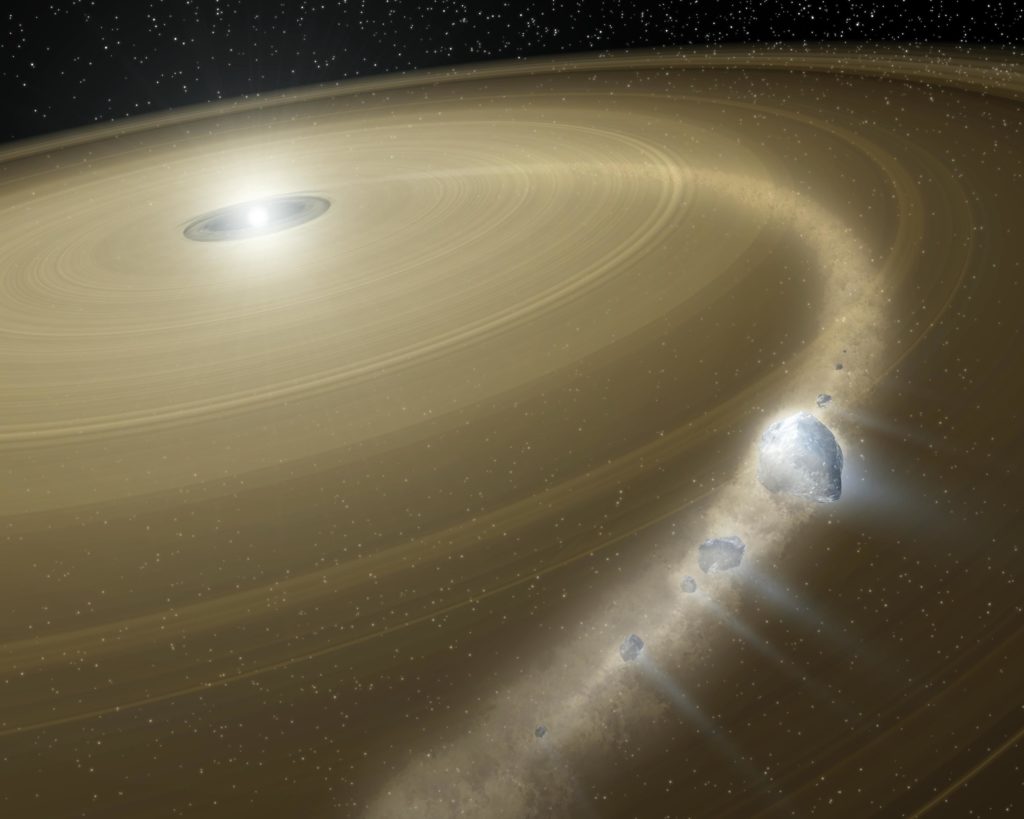Project area/S
- Accretion physics and slow transients
- The Local Universe
Project Details
Many stars within our Galaxy host planets. Since the majority of stars end their lives as white dwarfs we want to know what happens to these planets once the star has evolved and has become a white dwarf. Up to now no planets have been found around white dwarfs however there is evidence that planets survive but as debris disks.
Elements heavier than helium are expected to sink and disappear below the atmosphere of a white dwarf, leaving either a pure hydrogen or helium atmosphere. However, a significant fraction of white dwarfs shows the presence of heavy elements such as calcium, magnesium and iron which means that they must have been accreted from circumstellar material. The discovery of polluted white dwarfs with large infrared excess suggests that this environment is a debris disk composed of asteroidal/planetary material.
The project will involve an analysis of mid- and high-resolution spectra of white dwarfs obtained with echelle spectrographs of the European Southern Observatory. These spectra will be fitted with model spectra to determine the white dwarf atmospheric properties such as the effective temperature, surface gravity and abundance of heavy elements. Finally, the measured abundance pattern will be used to determine the likely source of the accreted material.
Student Attributes
Academic Background
Some understanding of stellar evolution and atomic physics.
Computing Skills
Experience with Linux and some programming skills.
Training Requirement
Spectral and photometric analysis: will have an understanding of how to extract stellar parameters from optical spectroscopy and from astrometric and photometric measurements.
Project Timeline
- Week 1 Inductions and project introduction
- Week 2 Initial Presentation
- Week 3 Data reduction using available pipelines
- Week 4 Fitting of spectra with a pre-calculated grid of model spectra to determine the stellar parameters
- Week 5 Identify suitable spectral lines that can be used to measure abundances
- Week 6 Measure abundances of identified lines
- Week 7 Build an abundance pattern for the sample of white dwarfs and apply diffusion calculations
- Week 8 Make a comparison of the measured abundance to abundance patterns of solar system objects and determine the likely accretion source
- Week 9 Final Presentation
- Week 10 Final Report
